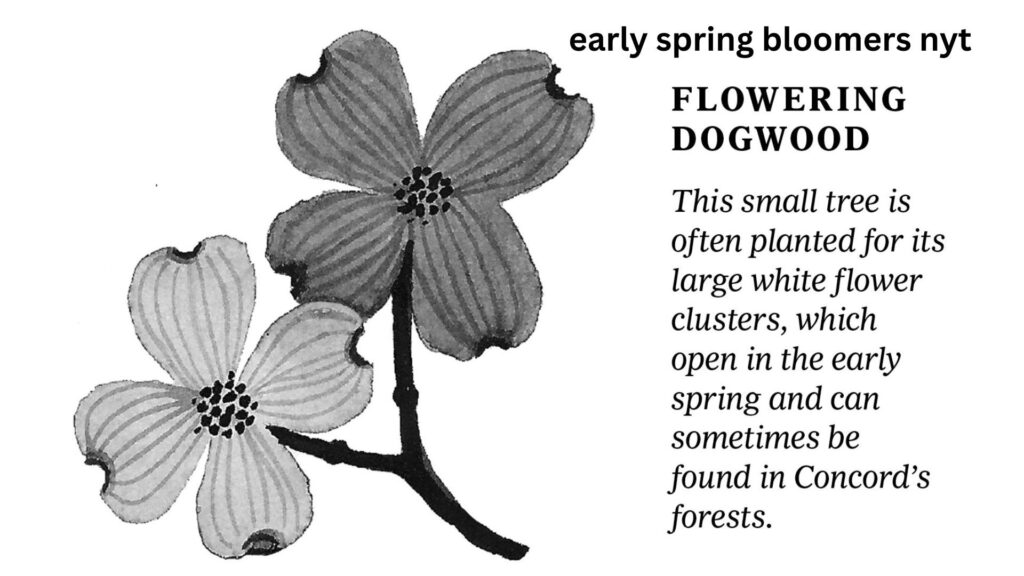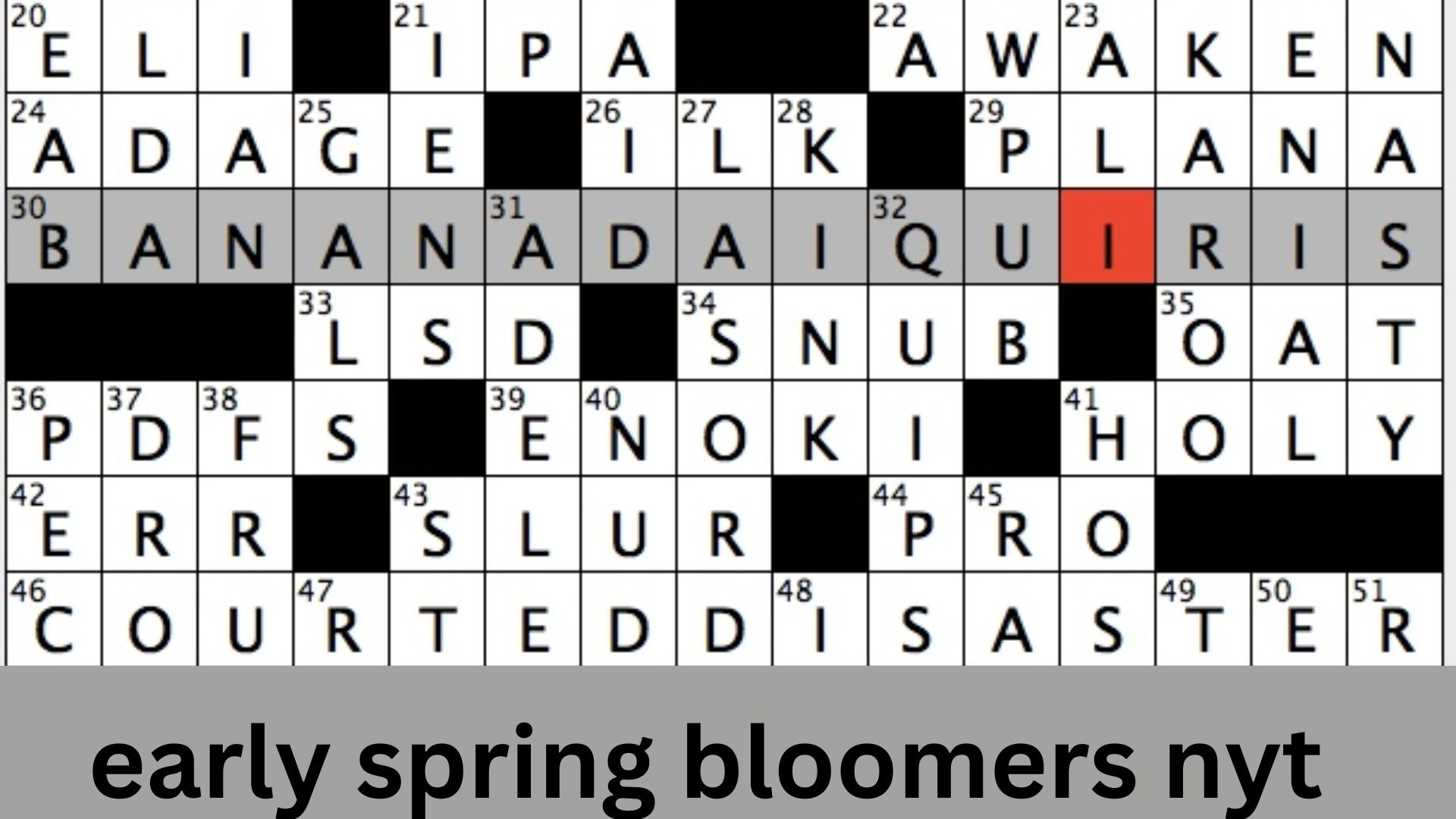introduction
Crossword puzzles are a beloved pastime for many, offering a unique blend of wordplay, mental exercise, and occasional frustration. As puzzle solvers work through each day’s challenge, they often encounter a variety of clues—some straightforward, others more cryptic. Among the more intriguing and seasonally inspired clues is “Early Spring Bloomers NYT”, which consistently appears in the New York Times (NYT) Crossword. This clue not only highlights the beauty of nature but also provides a rewarding challenge for both beginner and expert solvers alike.
In this article, we’ll dive deeper into the “Early Spring Bloomers” NYT crossword clue, explore common answers, discuss strategies for solving such puzzles, and take a closer look at the cultural and botanical significance of early spring flowers. Whether you’re a seasoned crossword solver or someone just starting, you’ll find this guide helpful in understanding how to approach the clue and why early spring flowers make such compelling answers.
Understanding the Clue: What Are Early Spring Bloomers?
The clue “Early Spring Bloomers NYT” typically refers to flowers that bloom in the early days of spring—often when the chill of winter still lingers in the air. These flowers are some of the first to emerge from the ground, signaling the end of winter and the arrival of warmer weather. They are hardy and can endure a variety of harsh conditions, including frost and snow. As such, early spring bloomers are symbolic of renewal, hope, and resilience.
For crossword solvers, this clue is a reminder of the season of transition, where the world awakens from its winter slumber, and color returns to gardens and landscapes. These early bloomers are not only crucial to the ecosystem—they also provide a sense of joy and optimism after months of cold, gray weather.
Also read: octordle hint
Common Answers to the “Early Spring Bloomers NYT” NYT Clue
When solving the “Early Spring Bloomers” clue in a crossword puzzle, there are several flowers that come to mind immediately. These are common answers that fit the description of being early bloomers in spring. Let’s explore some of the most popular flowers that frequently appear as answers in these puzzles.
1. Crocus (6 Letters)
The crocus is one of the quintessential early spring flowers. Crocuses are often the first to bloom after winter, sometimes even pushing through the last remnants of snow. These hardy flowers come in a range of colors, including purple, yellow, white, and orange. Their bright, cup-shaped blossoms are a welcome sight for anyone tired of winter’s grayness.
Crocuses are not just a visual delight; they also have cultural significance in many societies. In certain traditions, crocuses represent new beginnings and the promise of warmer weather ahead. Their appearance in crossword puzzles, particularly as a 6-letter word, makes them a frequent answer for clues about early spring bloomers.
2. Tulip (5 Letters)
Though tulips are more commonly associated with mid- to late-spring bloomers, some varieties are among the first to flower in the season of Early Spring Bloomers NYT. Tulips come in a wide array of colors, including red, pink, yellow, and purple, making them an enduring favorite for gardeners and florists alike. Their simple yet elegant shape—typically with a large, petal-like blossom—also makes them a standout in crossword puzzles.
As a 5-letter answer, tulip is an easy guess when crossword clues mention springtime blooms. While tulips may not be the very first flowers to appear (like crocuses), their early blooming varieties still make them a frequent answer.
3. Daffodil (8 Letters)
The daffodil, with its iconic trumpet-like shape and bright yellow color, is one of the most recognizable early spring flowers. Daffodils typically bloom towards the end of winter or in the early days of spring, heralding the season’s transition. They are symbols of rebirth and renewal, often used in various cultural and religious rituals to represent new life.
As an 8-letter word, daffodil is a common answer in crossword puzzles that focus on flowers, especially those related to springtime. Their distinct appearance and the fact that they bloom early in the season make them a perfect fit for this clue.
4. Iris (4 Letters)
The iris is a beautiful and diverse flower that blooms in various seasons, including early spring. Known for its striking colors—ranging from purple to yellow to white—the iris is a versatile flower that can adapt to different climates. In areas with milder winters, irises may bloom as early as late winter or early spring.
With only 4 letters, iris is another common solution to the “Early Spring Bloomers” crossword clue. Its simplicity and the fact that it blooms early make it a natural fit for this puzzle.
5. Snowdrop (8 Letters)
True to its name, the snowdrop is one of the earliest flowers to bloom in the spring. Snowdrops are often the first flowers to break through the snow, making them a symbol of resilience and hope. These delicate white flowers have a subtle yet charming appearance, often growing in clusters in woodlands and gardens.
As an 8-letter answer, snowdrop is a common fit for crossword puzzles that highlight early spring blooms. Their association with the last vestiges of winter and the transition to spring makes them an ideal answer for this clue.

How to Approach the “Early Spring Bloomers NYT” Crossword Clue
While the “Early Spring Bloomers” clue can seem straightforward, it can still present challenges depending on the number of letters required and other intersecting clues in the puzzle. Here are a few strategies that can help you tackle this clue with confidence.
1. Know Your Early Spring Flowers
Understanding the types of flowers that bloom in early spring is the first step toward solving this clue. As mentioned earlier, common answers like crocus, tulip, daffodil, iris, and snowdrop are reliable solutions. However, other flowers may fit, especially those that are less common but still bloom early in the season, such as primroses or hellebores.
By keeping a mental list of flowers that are known for their early spring blooms, you can quickly narrow down your options.
2. Pay Attention to Letter Count
One of the most crucial aspects of solving crossword puzzles is matching the number of letters in the answer to the clue’s requirements. If the clue requires a 5-letter word, it’s easy to eliminate options like daffodil (8 letters) or snowdrop (8 letters). Instead, focus on flowers with the appropriate number of letters, such as tulip (5 letters) or iris (4 letters).
3. Use Crossword Solver Tools
If you’re stuck and need a little extra help, Early Spring Bloomers NYT crossword solver websites can be incredibly useful. These websites allow you to enter the known letters of a clue and the total number of letters required, and they will generate a list of potential answers. Tools like Crossword Solver or OneAcross can help you quickly find a solution, especially when the crossword puzzle contains particularly tricky clues.
4. Consider Wordplay and Synonyms
Crossword clues often contain wordplay or subtle hints that can make the puzzle more challenging. For example, the word “spring” may not always refer directly to the season—it could also hint at the concept of new growth or rebirth, which fits with flowers that bloom early in the season.
5. Practice Makes Perfect
Like any puzzle-solving skill, crossword expertise comes with practice. The more you solve, the more familiar you’ll become with common themes and the types of clues that frequently appear. With time, you’ll develop an intuitive sense for solving puzzles, including those that feature early spring bloomers.
The Botanical and Cultural Significance of Early Spring Bloomers
Beyond their role in hard crossword online puzzles, Early Spring Bloomers NYT hold important botanical and cultural significance. These flowers are not just beautiful; they represent key concepts of renewal, resilience, and growth.
Botanical Adaptations
Early spring flowers have adapted to bloom during a time when many other plants are still dormant. They can survive harsh conditions, including freezing temperatures and snow, because they rely on the early spring sunlight that reaches the ground before the trees leaf out. These flowers often have specialized mechanisms that allow them to thrive in cool, often unpredictable weather.
Cultural Significance
In many cultures, early spring bloomers are associated with renewal and rebirth. For example, the daffodil is often a symbol of hope, as its bright yellow petals suggest a fresh start after a long winter. Similarly, snowdrops are seen as symbols of resilience, breaking through the cold ground to remind us that spring is on the way.
Gardening and Landscaping
For gardeners, early spring bloomers are an essential part of the landscape. These flowers are often planted in gardens to provide color and vibrancy as the weather warms. Gardeners often plant a combination of early bloomers and later-blooming flowers to create a season-long display of color.
Conclusion
The “Early Spring Bloomers NYT” clue in the New York Times Crossword provides both a fun and educational challenge for puzzle solvers. By recognizing the common flowers that bloom early in the season, such as crocus, tulip, daffodil, iris, and snowdrop, solvers can quickly find the correct answers to this clue.
Crossword puzzles are not just an excellent mental workout; they also allow us to appreciate the beauty and significance of the natural world. As you tackle the Early Spring Bloomers clue in your next crossword puzzle, take a moment to enjoy the symbolism these flowers hold and the joy they bring to the season.
